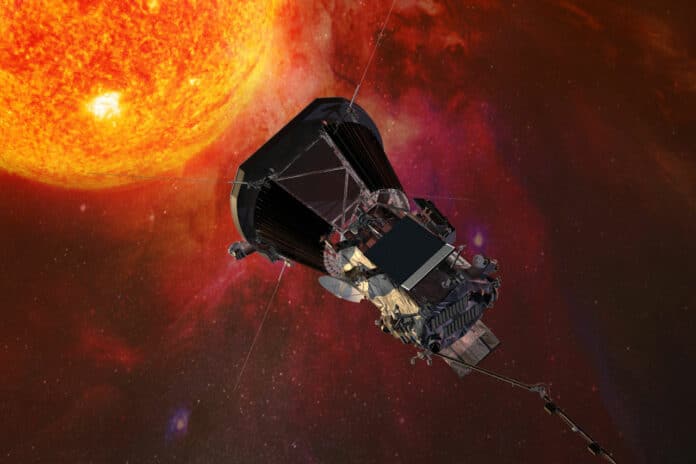Tomorrow, on Wednesday, NASA is going to announce the first-ever mission to touch the sun. They are planning to launch a probe that will dip inside the Sun’s atmosphere.
Unlike any other probe, this Solar Probe Plus mission will have to cope with temperatures and radiation. It will collect the data during the process and help astronomers predict solar storms. In addition, it will provide clues on some of the deepest mysteries surrounding our closest star.
To study the sun’s surface, its solar winds, and cosmic rays, in 1976, a 370-kilogram (815-pound) block of instruments called Helios 2 came within about 43 million kilometers.
The world now largely depends on a network of technology. Although, the technology is everywhere, from Earth’s orbit to space. But, it is vulnerable to a threat we barely understand. It may have enormous damage from extreme solar activity. Likewise, humans who might one day live outside our atmosphere will also need protection from severe winds of charged particles and radiation.
So, to improve understanding, NASA is going to get even more up close and personal with the Sun’s corona than Helios 2. It is expected that it will blow its record out of the sky.
Due to be launched around August next year, the robust little probe will swing past Venus seven times over the course of seven years. This will calibrate an orbit that takes it within 6 million kilometers of the Sun’s surface – or photosphere – in 24 elliptical loops.
As reported, the probe will be forced to endure temperatures up to 1,400° Celsius.
Brad Tucker from the Australian National University’s Research School of Astronomy and Astrophysics explained, “The biggest leap in technology of this mission is the heat shield. The heat shield is an 11.5-centimeter-thick carbon-composite shield, which can withstand temperatures of nearly 1,400 degrees Celsius. Using carbon composite is really allowing us to do much more complicated things.”
The US$1.5 billion Solar Probe Plus (SPP) will use an active water circulation system to help protect instruments that will measure the corona’s electric and magnetic fields, electron temperatures, and plasma density. There will also be an imaging system to take a few holiday snaps while spending such quality time under the Sun.
Tucker said, “Understanding the activity of the Sun and predicting weather from it is crucial if we really want to have humans explore space more, including working and living on the Moon and Mars.”
“Getting a grip on how particles are whipped into high speeds will also give researchers a better idea of how objects move through space. The Kepler Space Telescope is steered by solar winds,” he pointed.
“By understanding the solar wind in better detail, how it is accelerated, namely, it will open up the possibility of using it to accelerate spacecraft like the one proposed in the Light Sail project.”
